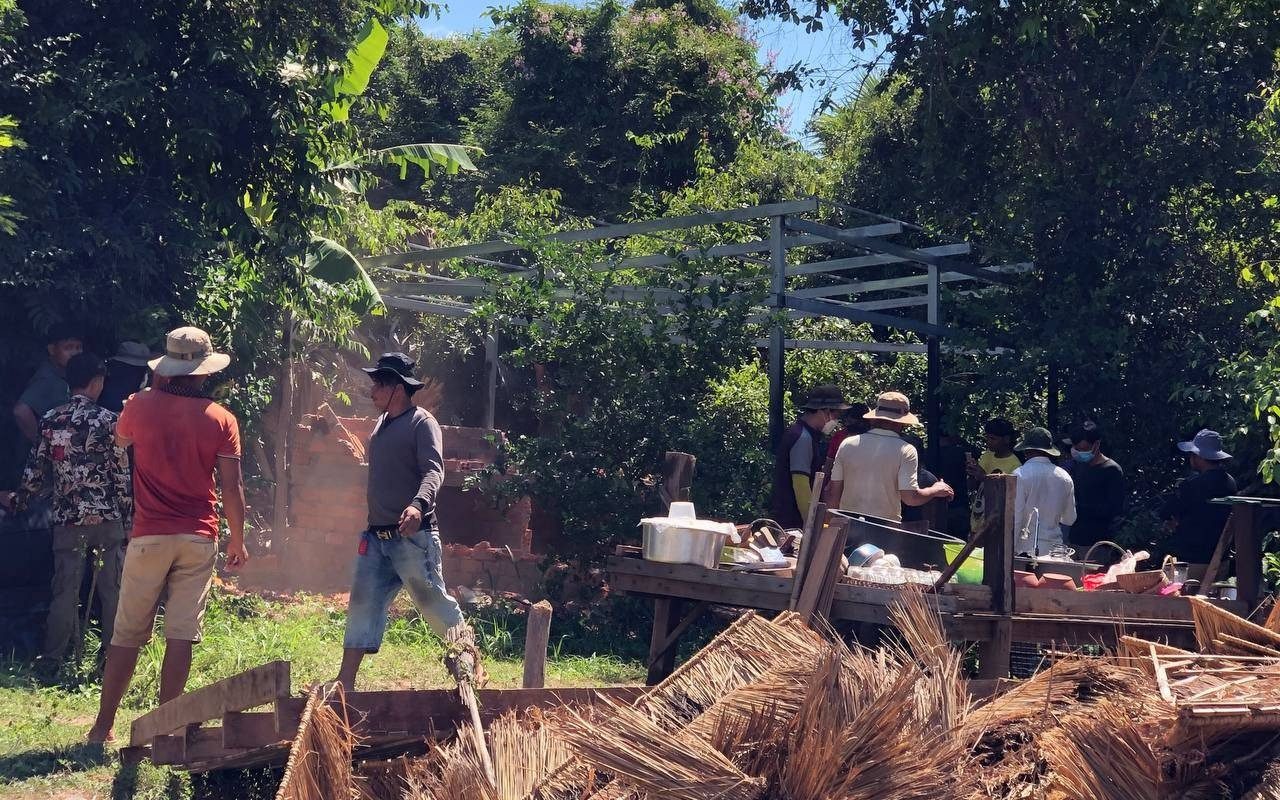UPDATED — A leaked report from experts at an international body overseeing Angkor Archaeological Park reiterated past congratulations for Cambodia’s efforts to dismantle illegal structures in heritage areas amid mass evictions of roughly 10,000 families from the site.
Without raising any issues about the current evictions, the report said Cambodia should continue its program to remove illegal structures around the park.
The 21-page report — which was obtained by VOD — was produced by ad-hoc experts under the International Coordinating Committee for Angkor Wat and presented at internal meetings in December. ICC-Angkor oversees the “safeguarding and development” of Angkor Wat, hosting regular meetings between its partner organizations of Unesco, the Cambodian government, Japan and France.
After Prime Minister Hun Sen backed mass evictions around the world heritage site starting in August, a Unesco spokesperson said that the ICC-Angkor experts “will visit the relocation sites to conduct independent assessments of the relocation programme in mid-December.”
Yet the report offers almost no discussion of the evictions or the main relocation site about 20 km from Angkor Wat, which residents say is plagued with joblessness and lacks basic amenities. There is no mention of the people being relocated, how the process was implemented, the number of families involved or how it has affected them.
Instead, the ad-hoc group of experts “recommend, once again, that the APSARA National Authority continue to implement appropriate measures to deal with those illegal buildings, focusing on keeping Angkor as one of the iconic World Heritage sites,” it says.
The growth of illegal structures “poses objective problems of compatibility with the maintenance of the outstanding universal value of this site,” they write. The report is not signed with names.
Experts do not mention the relocation sites, Run Ta Ek and Peak Sneang. In one sentence, they “recommend that attention be paid to the sustainable development of newly established settlements by ensuring the economic conditions for their development.”
The report also reiterates recommendations it made in December 2017, which “congratulates the APSARA National Authority for carrying out the program of dismantling recent illegal constructions” and “recommends to consider the implementation of another dismantling program for more ancient illegal buildings located in sensitive areas.”
A few months earlier in August of that year, at least 500 structures were razed to the ground, the Cambodia Daily reported at the time.
In all, less than 300 words are dedicated to the razing of structures that prompted the most recent evictions.
Phil Robertson, deputy director of Human Rights Watch’s Asia division, said after reviewing portions of the report that “experts at archaeological restoration should not be considered as knowledgeable about issues involving forced relocation of communities.”
“That’s obvious, judging by the report’s insensitive and frankly ill-informed praise for authorities’ actions against long-residing communities living in the Angkor complex,” he said. “If UNESCO is serious about ensuring rights are respected, they need to commission a separate investigation and report about these forced relocations, and ensure it’s done in a transparent and participatory fashion that values the perspectives of those being displaced from communities where they have lived for many years.”
The tension between the livelihood of residents — many of whom have soft land titles for their homes and survive selling food or souvenirs to tourists — and preserving the park’s ancient temples has come up throughout Angkor Wat’s three decades as a world heritage site.
Back in 2008, the World Heritage Committee warned against “uncontrolled” development in the park, later commending Cambodia in 2014 for progress in managing illegal structures. Land Minister Chea Sophara said in August that the ministry had counted nearly 8,500 new illegal constructions between 2019 and mid-2022. He later said almost 10,000 families had accepted relocation.
Seng Tola, a 33-year-old Angkor resident, pointed out that people have lived and worked near Angkor Wat for centuries, given that it was once the center of the Khmer Empire. His job renting out traditional Khmer clothing to tourists for photoshoots — at a shop which had been demolished as of January — “is part of what helps to diffuse our culture to the world,” he said during a visit last fall.
Families across the park have repeatedly said they were forced to leave under threat, with protests breaking out in one commune when residents believed they were next to go.
Hun Sen has blamed the evictions on Unesco and said they were necessary to protect its status as a world heritage site. For its part, Unesco has repeatedly said that the Apsara Authority is in charge of the park and that it has not called for population displacements.
The park has not been listed as being in danger of having its world heritage status revoked since 2004.
Unesco responded late Wednesday to emphasize that the comments of congratulations were from 2017, not 2022. The ad hoc experts had visited relocation sites Run Ta Ek and Peak Sneang in December, said Unesco communications director Matthieu Guevel.
The World Heritage Committee will discuss the Cambodian government’s report on the conservation of Angkor at its next ordinary session scheduled in September, and may then make recommendations to Cambodian authorities, he said.
The document was also “made available officially” in the morning Wednesday, Guevel said.
The ICC is co-financed by France and Japan, with ICC experts receiving flights and paid accommodation in Cambodia but no salary for their work.
The report’s remaining 19 pages contain detailed recommendations for preserving the park’s structures, such as how to adequately drain rainwater from an Angkor Wat tower or whether to restore the tusks of an elephant sculpture.
This story has been corrected to reflect that Unesco was reiterating congratulations made in 2017 recommendations about demolishing illegal structures, not the most recent round.
It has also been updated with Unesco’s comments received late Wednesday, and to note that the body says the report has now been officially released.













